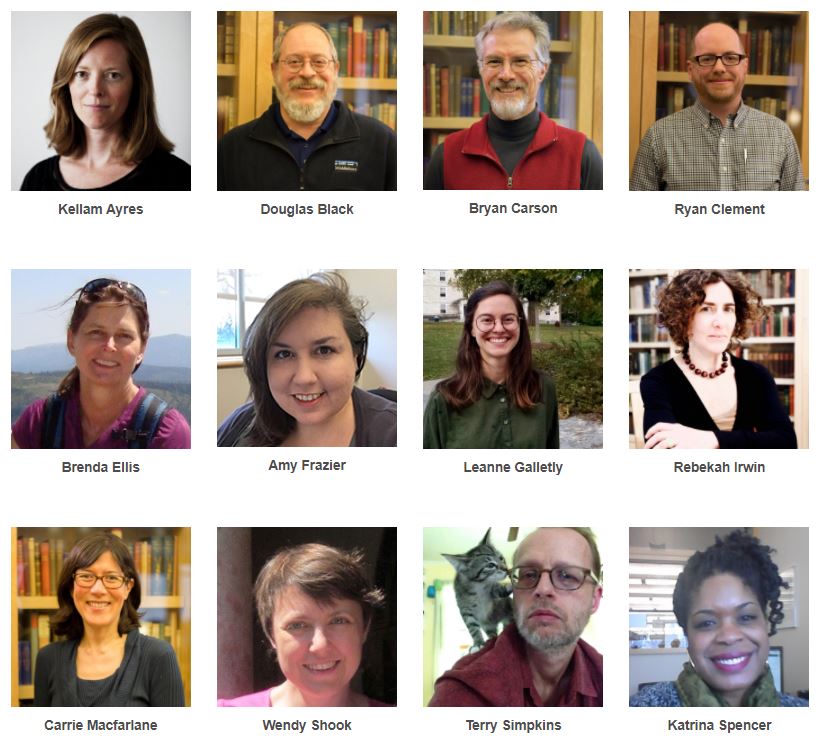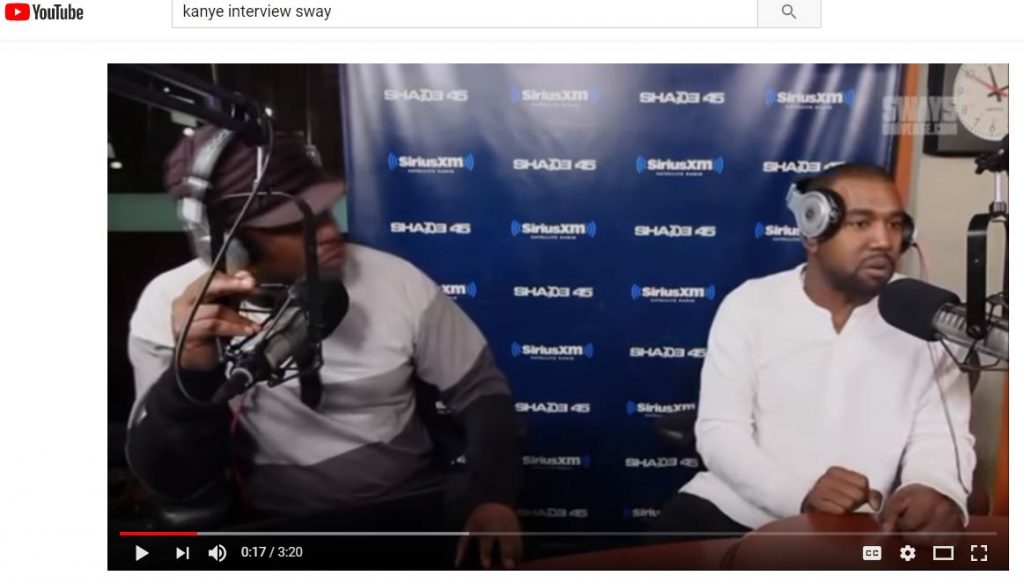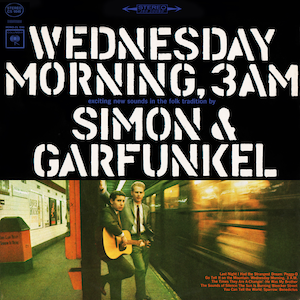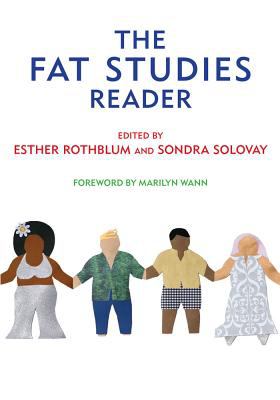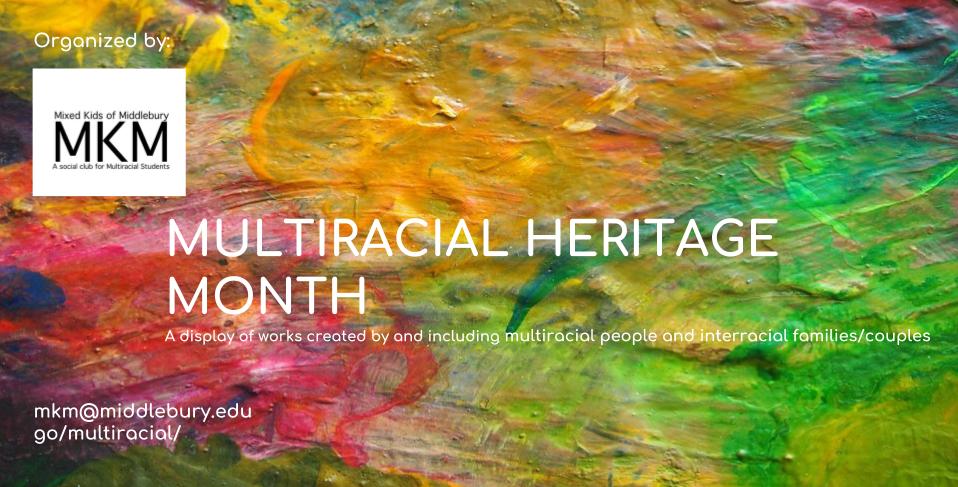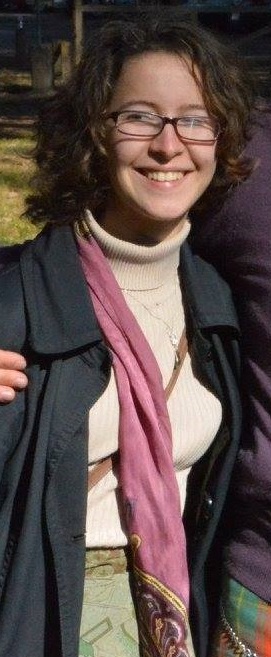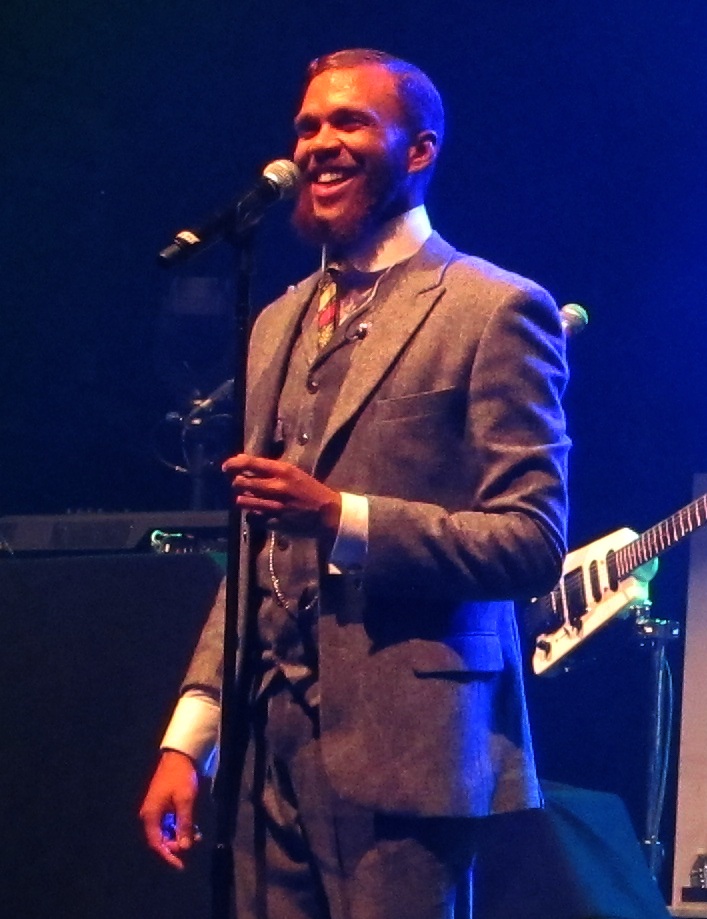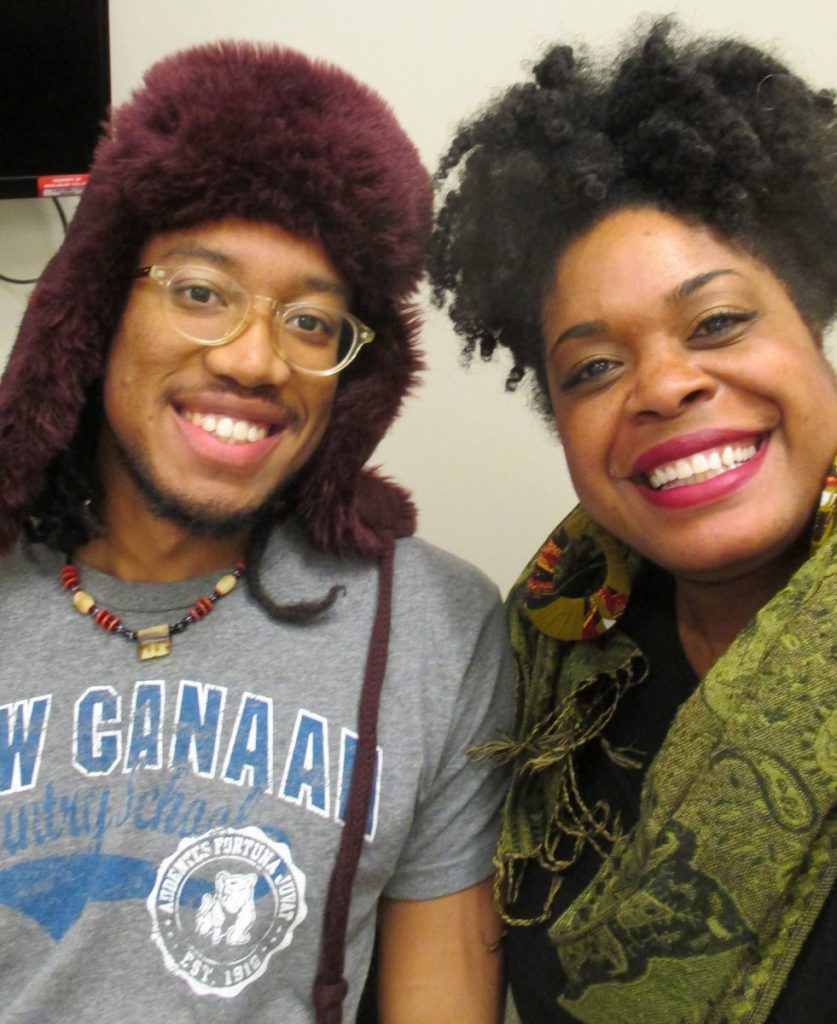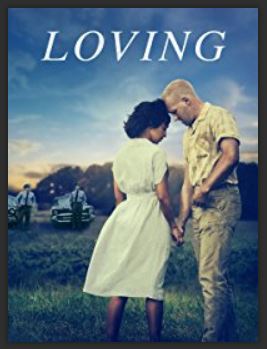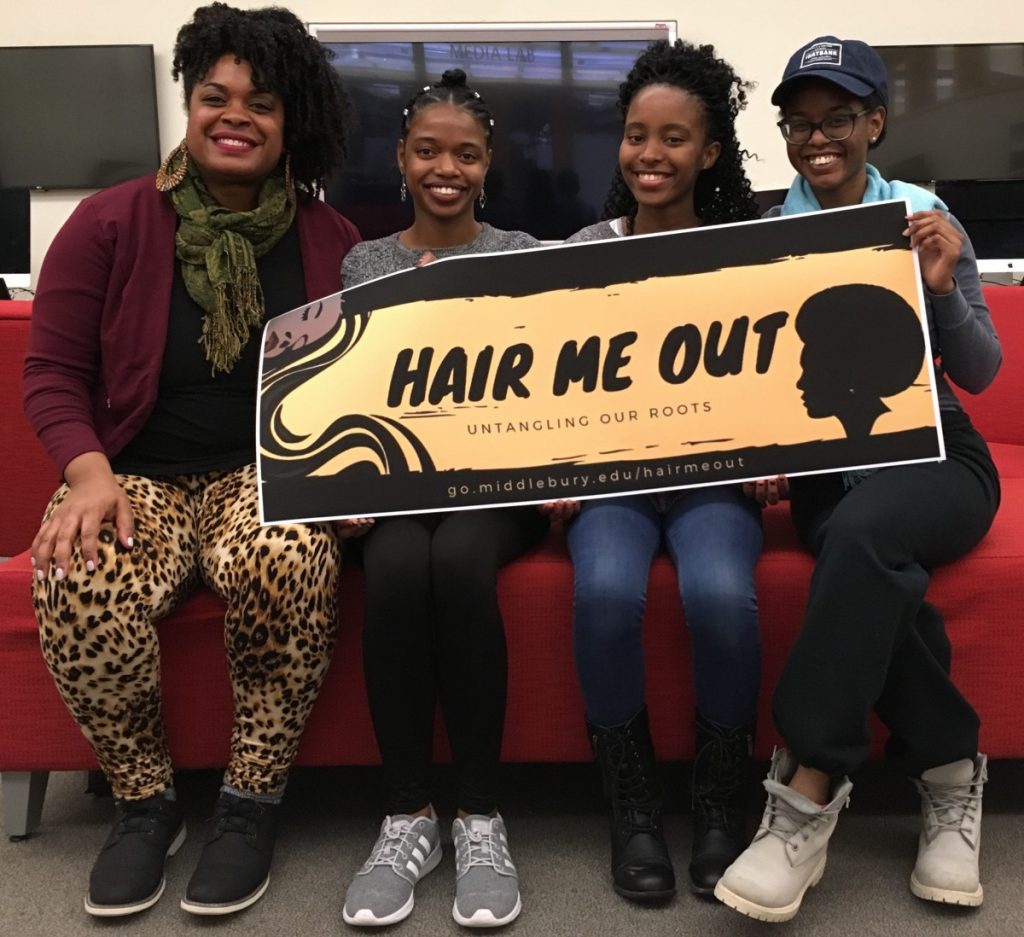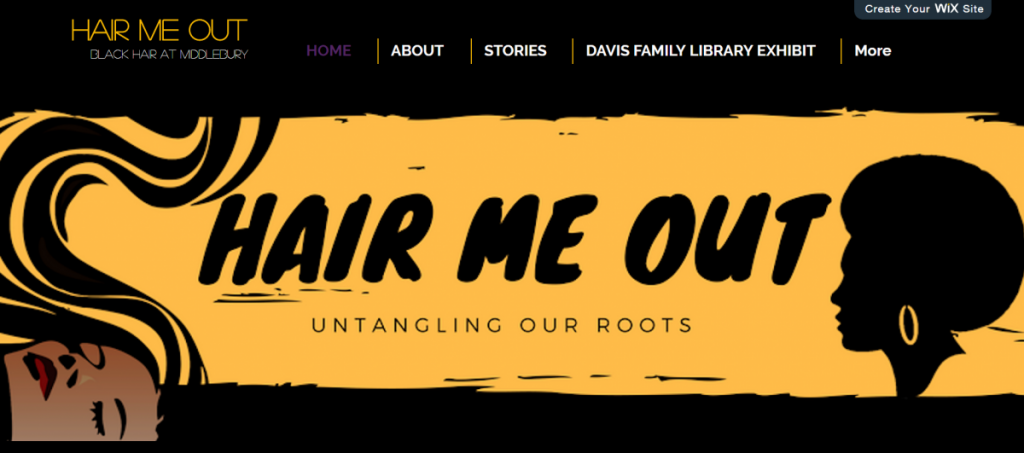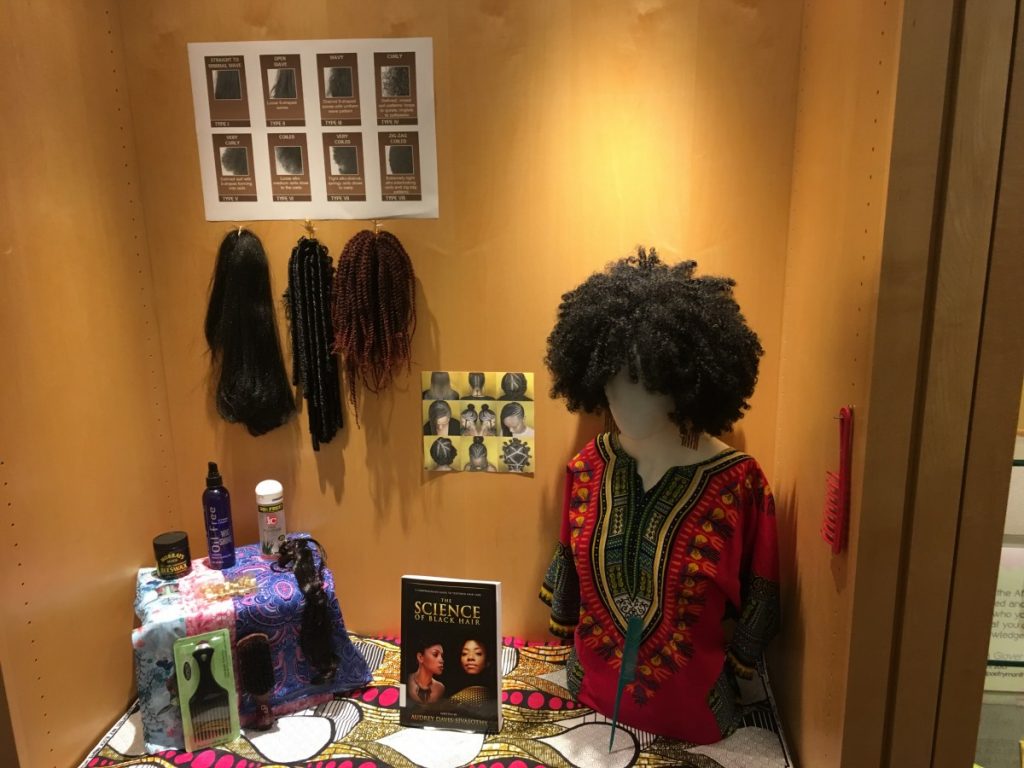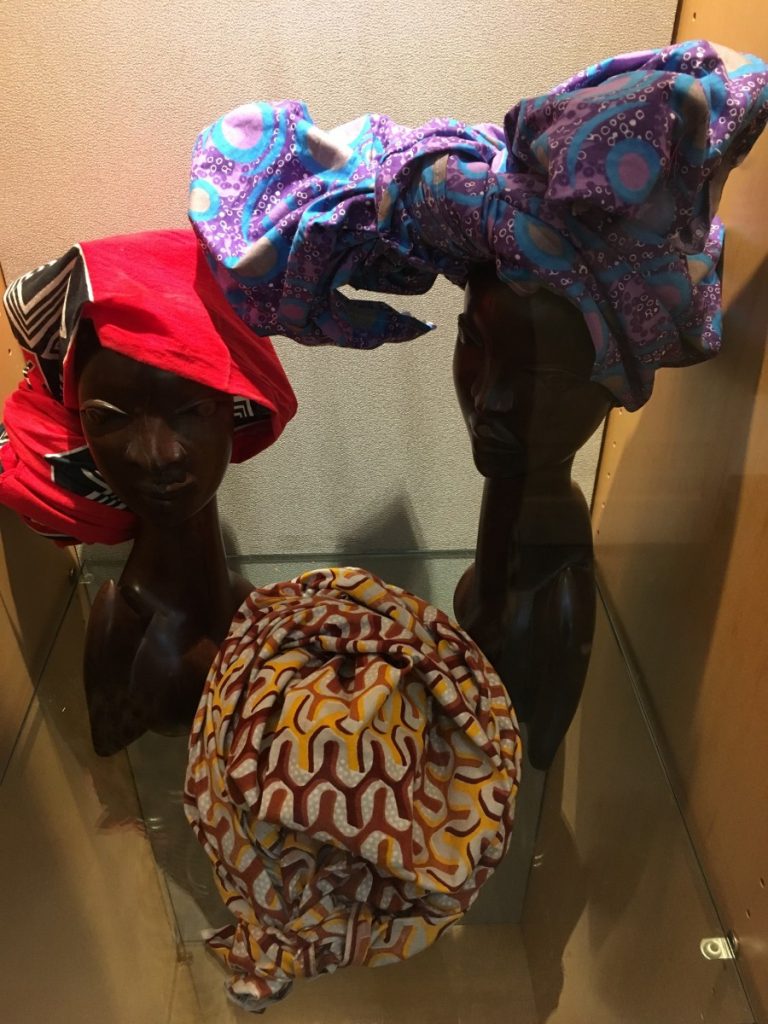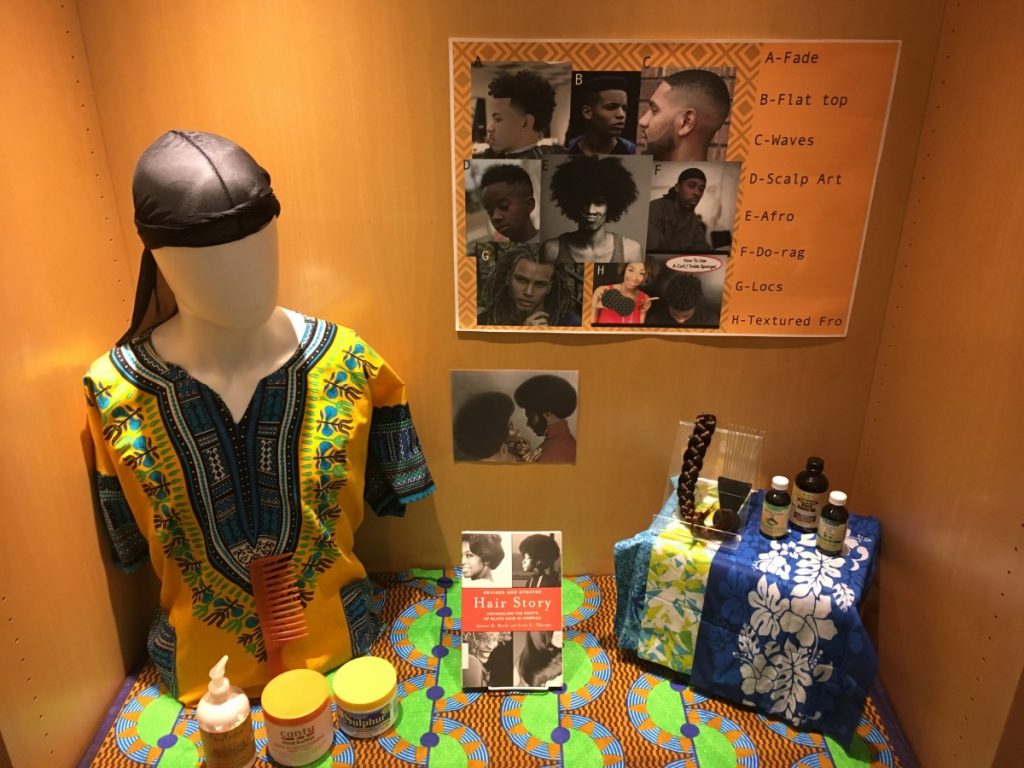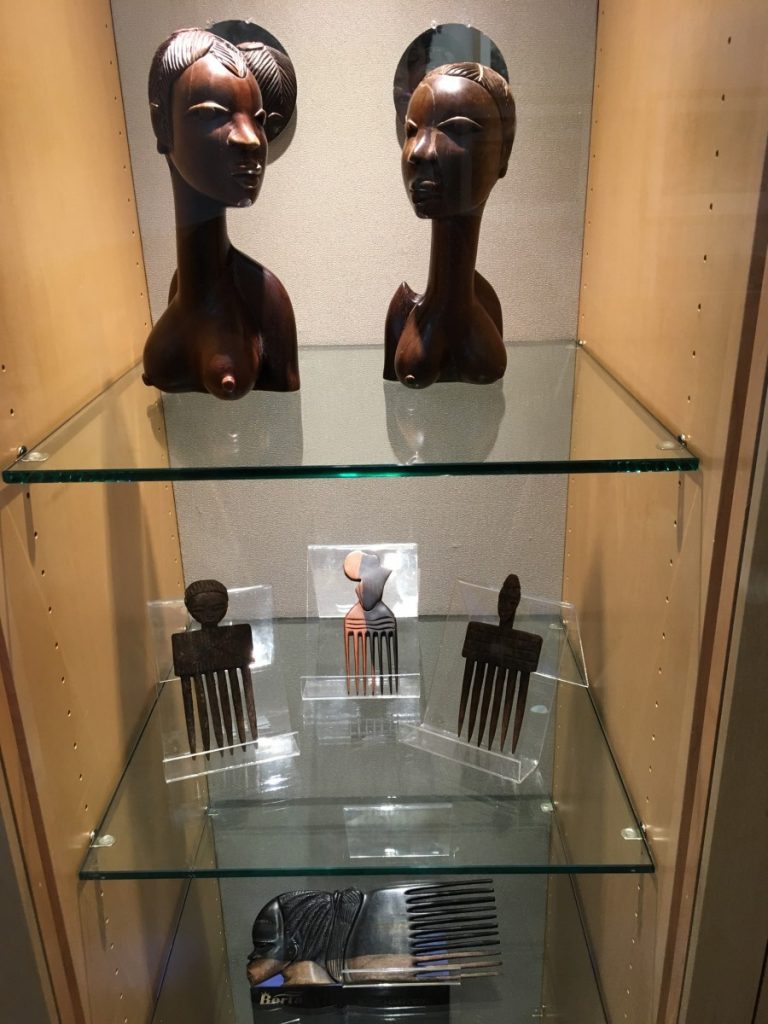
From April 16th- April 23rd, Chellis House-Women’s Resource Center will be hosting an interactive display in the Davis Family Library atrium called “fat ‘n’ hairy: ways i’m failing the patriarchy.” The display includes a variety of library materials and first-hand accounts from community members listing the ways they are failing the patriarchy. For more, read below.
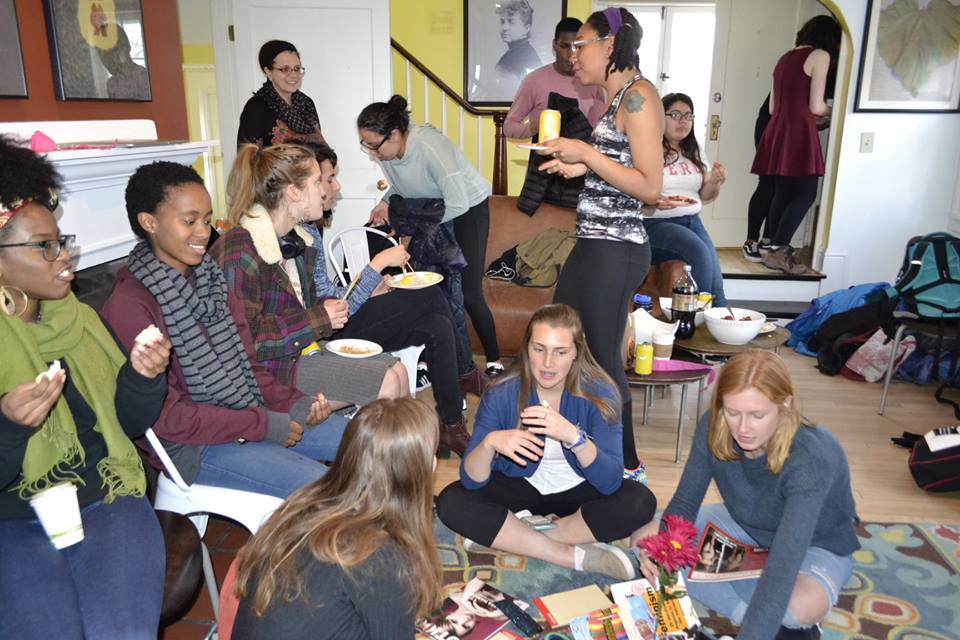
A gathering at Chellis House was organized on April 11, 2018 to collect responses to the prompt, “How are you failing the patriarchy?” The responses form part of the atrium’s display. Responses were also collected online.
Respondents
- Katrina Spencer (KS) is from Los Angeles, California. She is the Literatures & Cultures Librarian and has been at Middlebury for just over a year.
- Karin Hanta (KH) is from Vienna, Austria. She is the Director of Chellis House-Women’s Resource Center and a Visiting Lecturer in Linguistics/Gender, Sexuality, and Feminist Studies. She has worked for Middlebury for 15 years.
- Mikayla Hyman (MH) is from Port Washington, New York. She is the founder and president of the Middlebury Refugee Outreach Club (MiddROC), president of the Youthful Alliance of Merrymaking (YAM), Ecology and Evolution Teaching Assistant (TA), Cell Biology and Genetics TA, Academic Chair of Hillel, a Chellis House Monitor and a sophomore.
- Grace Vedock (GV) is from Shawnee, Kansas. She is the president of College Democrats, a member of the Academic Judicial Board, a Chellis House Monitor and a sophomore.
- Taite Shomo (TS) is from Denver, Colorado. She is the Communications Director of College Democrats, a Chellis House Monitor, an It Happens Here Organizer and a sophomore Feb.
- Itzel Diaz (ID) is from Queretaro, Mexico and Austin, Texas. She is a Chellis House Monitor, Riddim World Dance Troupe Member, newly appointed Alianza Event Coordinator (whoop whoop!) and a sophomore Feb.
More Participants
-
- Treasure Brooks is a first-year student, co-president of the Black Student Union and a Chellis House Monitor.
- Alice Butler is from Helena, Montana. She is a Campus Tour Guide, member of the Log Rolling Club, Manager of Sunday Night Environmental Group, a WRMC Radio DJ, a Midd View Leader and a junior.
- Cara Eisenstein is from Baltimore, Maryland and is the president of Feminist Action at Middlebury, a Chellis House Monitor and a senior.
- Vishawn Greene is a first-year student and Chellis House Monitor.
- Cat La Roche is from Asbury Park, New Jersey. She is a WRMC deejay, Chellis House Monitor and a first-year student.
What is “fat ‘n’ hairy: ways i’m failing the patriarchy”?
KS: “fat ‘n’ hairy” started when I began to identify and acknowledge this constant feeling of friction I held internally. No matter how much success I achieved in various parts of my life, whether it be earning As in college, securing a stable job or maintaining a group of friends who demonstrated reciprocal love for me, I continually felt like a failure if my body hair wasn’t removed, if my stomach wasn’t flat and if my cleavage and rouged lips weren’t effectively calling to a man. When I stopped to think about where I’d developed these very damaging expectations of myself, I realized I was imposing values on myself that uplifted the patriarchy. These ideas are often channeled through the media but are also passed down generationally within families. I knew I wasn’t alone in wrestling with these nagging voices that were constantly telling me I wasn’t doing enough and I wanted an outlet to manifest a collective discontent. ‘fat ‘n’ hairy” does just that.
KH: A brainchild of Katrina Spencer, who always finds imaginative and provocative ways to engage library visitors in the atrium. With the help of the library staff, Chellis House workers took this idea to the next level, browsing through their favorite patriarchy-defying books and essays and reaching out to fellow students to engage with the topic as well. Our brainstorming and cardmaking gathering with crafts last Wednesday (April 11th) at Chellis House was a great success, connecting patriarchy failures and (hopefully) giving an impetus for the beginning of new friendships between fellow activists.
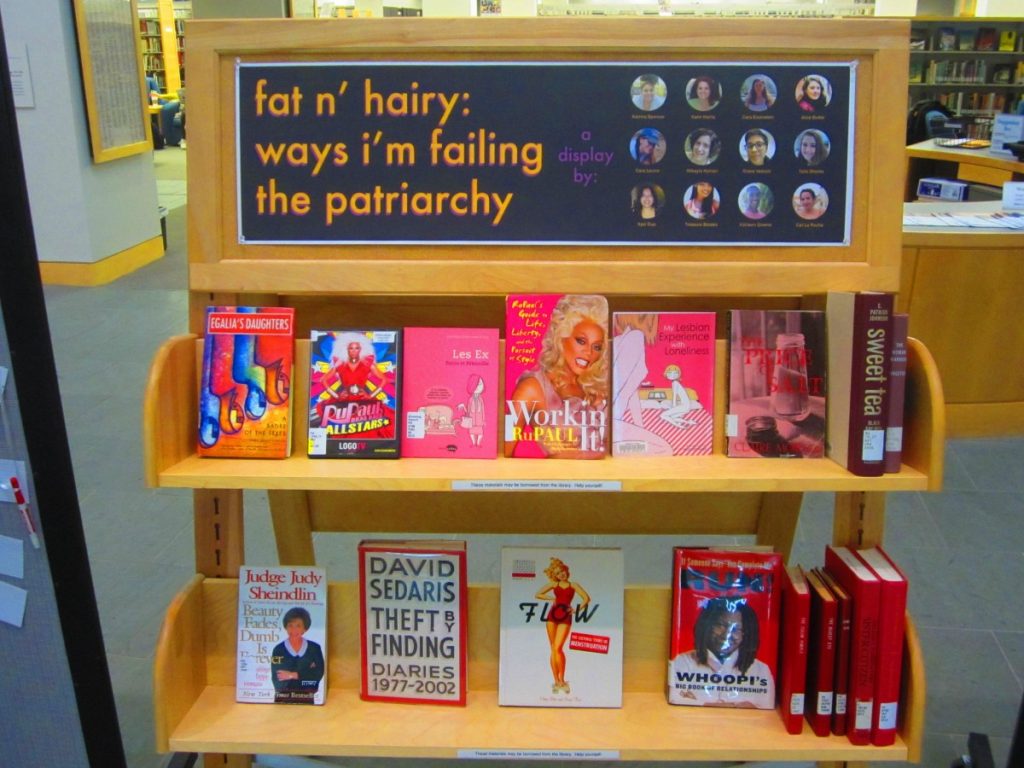
The display cart includes many books whose themes resist the patriarchy.
MH: “fat ‘n’ hairy: ways i’m failing the patriarchy” is a project that allows people to embrace features of their bodies, attitudes, and perception of the world that have traditionally been looked down upon due to misogynistic and patriarchal social structures. Karin gave an excellent summary of the event and its development. Through the multimedia display, people can find comfort and support in the shared experiences of fellow “failures”. Located in the Davis Family Library, the display is a physical representation of the often problematic and patriarchal reification of knowledge and knowledge producing structures. Here, people who are failing the patriarchy can assert their agency, affecting the ways knowledge is produced and what it means to be worthy.
What about this project resonated with you?
GV: I enjoy the variety of material we have on display and I hope that there is something that resonates with everyone. As a lesbian, I wanted to make sure that there is queer visibility in our materials, because resisting the patriarchy is not a task made solely for straight women. As is seen in the notecards (the participatory aspect of the project), there are so many ways in which someone can resist the patriarchy, be it by engaging with our material, participating in movements, or even just taking the time to be thoughtful and intentional with your words and actions. I love the honesty of people’s responses.
KS: Women are subject to an inordinate amount of scrutiny based on sex and gender expression alone. Are they too loud? Are they loud enough? Can they cook? Are they nurturing? Can they support themselves? Are they gold diggers? Do they need to color their roots? Should they be wearing that? I noticed that a lot of the critique the world exposes women to and a lot of the critiques we make of ourselves are based on a body of standards that our external to us. We don’t make the rules– nor are we consulted on them– but we are expected to abide by them.
TS: This project really resonated with me because there are so many ways that we fail the patriarchy every single day without even realizing it, and this gave me and other people in the community the opportunity to reflect on patriarchy and empowerment. In some ways, existing at all in a world that constantly seeks to oppress us is a way that women, People of Color, LGBT+ people, and other marginalized groups are failing the patriarchy and systems of oppression generally.
ID: This project is incredibly stimulating to a variety of different senses, which is something that I really love about it. There’s something visual, something musical, and something uniquely beautiful about the power that is derived from every aspect that makes up this project. Furthermore, I really enjoyed how much this project started and has continued to grow. It started out as a feeling that is shared by many womyn, and now, it is a beacon that serves as a reminder of unity and empowerment. I hope this project catches someone’s eye and allows them to pause and reflect on how they’re contributing to, failing, or attempting to fail the patriarchy.
KH: This project brought up a lot of memories: of my 10-year-old self, when my mother chopped off all my hair because it was too “unruly;” of my middle school self when my hair grew back all in curls because of puberty and my Latin teacher again chided me for having “unruly” hair; of an ex-boyfriend who, after we broke up, said he would miss my hair (as if my hair was my only distinctive feature); the time I organized a lecture and discussion about hair at Middlebury in 2010 with the late and great Carol Rifelj. It’s all entangled!
Had you done any work like this before?
KS: Two answers: yes and no. Crowd-sourced, collaborative displays? Yes, alla time. Group projects with a strong, public, feminist current driving them? No, but Sophia Wallace’s Cliteracy, the natural hair movement within the Black community and the wave of women allowing their underarm hair to grow and dyeing it, too, surely had a significant impact on me. Women are authoring new relationships with their bodies and, as “we” say in contemporary slang, “I’m here for it.”
GV: No – fat ‘n’ hairy is remarkably unique. I feel like I am constantly telling people “Oh, you have to read this article” or someone sends me book recommendations that I never get around to reading, so I really enjoy that we’ve created an entire cache of recommendations. There are so many incredible books, movies, podcasts, etc. out there, and I love how we can share these recommendations amongst each other.
ID: No, I have not. Which sucks! This is such an amazing and fun project to collaborate on and add to. I definitely hope to continue to do more projects like this.
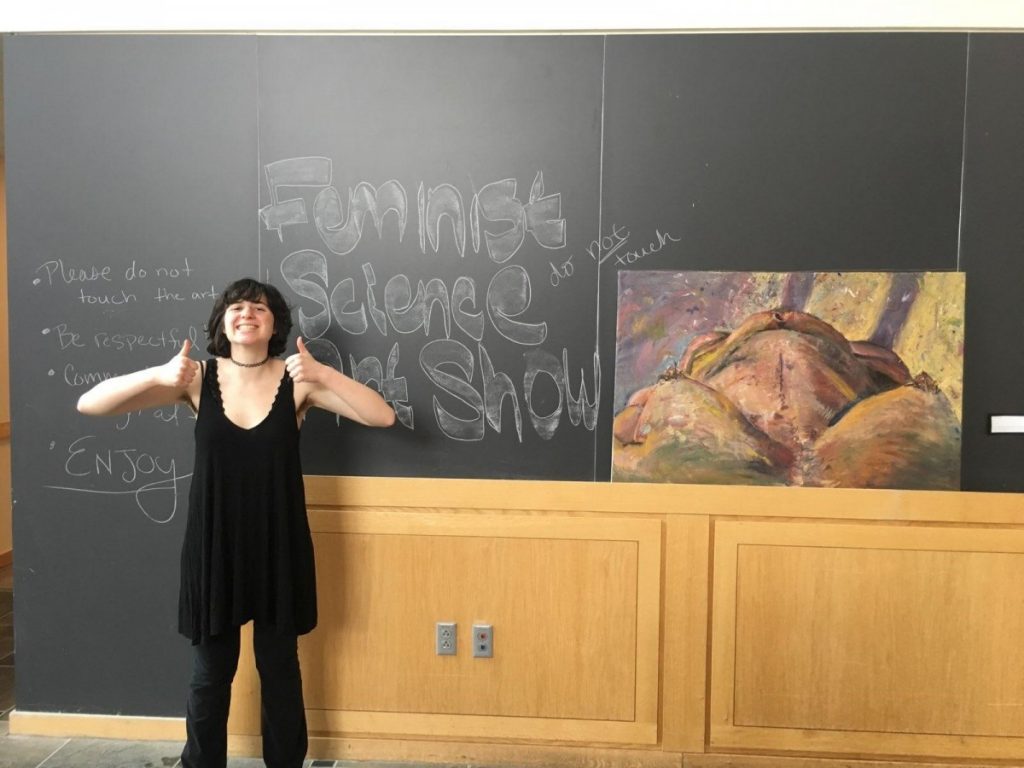
A photo of Mikayla Hyman, president of Middlebury College’s Refugee Outreach Club, posing with a painting by Rachel Nelson ’18 at the Feminist Science Art Show.
MH: This past J-Term I worked with Mika Morton ‘19 to organise and curate a Feminist Science Art Show. We reached out to students to facilitate the creation of art inspired by both intersectional feminist ides and the natural sciences. fat ‘n’ hairy reminds me of a painting created by Rachel Nelson ‘18. In resplendent, fantastical, non-realistic colors, Nelson used oil paint to depict a woman’s point of view while looking down at her own body. The hairy nipples and distended stomach were as empowering as they were beautiful. Nelson “works to remind people of beauty and of the sacredness of ourselves and the world”, and she certainly accomplished that goal with this piece. Also, it was hilarious to see multiple men stare at the painting and think it was mountains, and consequently get to tell them of a different interpretation. There is a picture of me with the painting at left. I am honored to be a part of another wonderful project!
What messages is this interactive display trying to forward?
KS: Women exist for purposes beyond tailoring our bodies for men’s consumption. Moreover, the body is a vessel and a vehicle. The person people want to access exists inside of it.
TS: Women and other marginalized groups have so many expectations and restrictions placed on their bodies, actions, and thoughts. I’m hoping that, by engaging with this display, viewers can both feel empowered in their bodies and selves and reminded of the harmful effects patriarchy has on ALL of us.
ID: Womyn are incredibly powerful, but we’re constantly being told to move a certain way, to sit in a certain way, to live in a certain way, and to exist in a certain way. I hope that by engaging in this display, womyn understand the way the patriarchy has affected them. This awareness is what will hopefully continue to drive this revolution of womyn empowerment and solidarity.
KH: We need to fail the patriarchy even more and find new imaginative ways to do so!
Who is the primary audience? Secondary?
KS: For me, I want other women to feel empowered and to feel even greater agency over their bodies. I want men to be reminded of women’s agency over our own bodies.
GV: The primary audience is supposed to be women. But really, the collection of resources we have can and should resonate with everybody. Anyone can fail the patriarchy. The patriarchy imposes expectations on women, but women are by no means the only people who should be actively resisting patriarchal norms. Masculinity was something we’ve talked about at length. The patriarchy also imposes gender norms and binaries – it’s important to remember that though women are the intended audience, genderqueer and gender non-binary people are actively oppressed by the patriarchy.
ID: Everyone should be a part of this audience who engages with this material. It should not be exclusive because we are all affected by the patriarchy.
KH: I hope that this exhibition activates the brain cells of everybody who cares to examine the display.
How did you interact with library collections to develop this project?
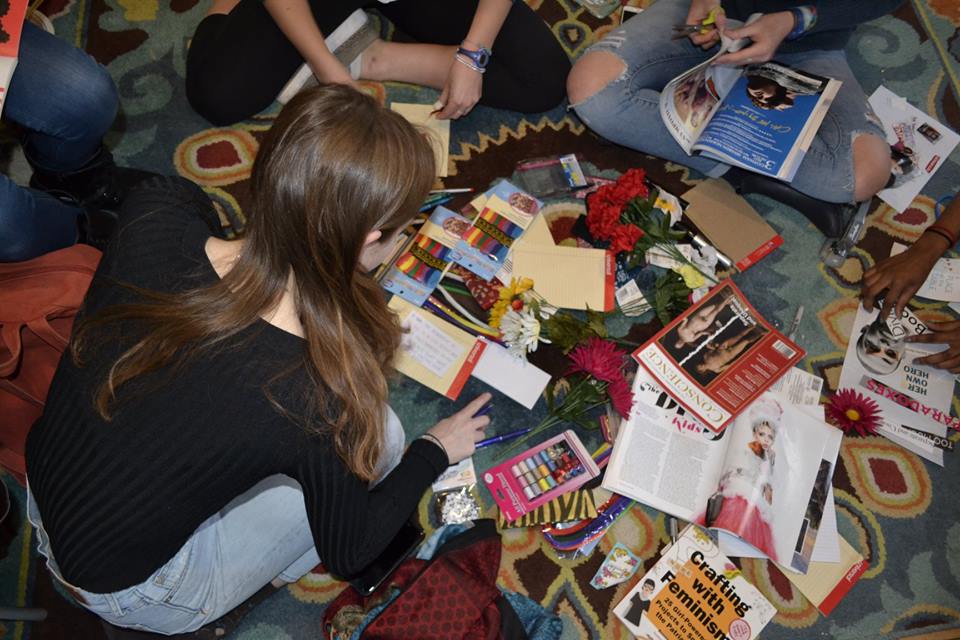
Students gather around crafting materials at Chellis House in preparation for the fat ‘n’ hairy display.
MH: A big chunk of the recommended books, artists, and musicians were all gathered during a Chellis House meeting. One night, Karin Hanta and all of the Chellis House Monitors sat in a circle and uploaded the titles/names of a variety of books, music, and artists to a Google Excel sheet. It was a wonderful to share such awesome resources and empower one another!
KS: A list of relevant materials/thematic content was crowdsourced.
KH: Thank you to Katrina, Rachel Manning and Kat Cyr!
ID: Katrina is such an amazing humyn being! Karin– thank you so much for collaborating with Katrina and for involving all of the Chellis House monitors.
How does the discussion of gender continue after the display is taken down?

An image of Supreme Court Justice Ruth Bader Ginsburg who will be featured in a biopic at the Marquis Theater
ID: The conversation of gender should always continue! I’m hoping to see the biopic on Supreme Court Justice Ruth Bader Ginsburg [RBG]. Additionally, I continue to engage in this conversation with men (in particular with my amazing boyfriend Ronnie Tapiwa Shereni), and we both discuss how the patriarchy has influenced the both of us and how to combat it!
GV: When isn’t a good time to discuss gender? I hope that the display inspires people to learn more about gender issues and engage in positive dialogue and action. Gender inequality and patriarchal standards inform so much of our lives and society, so I hope that people become cognizant of ways that they can subvert these norms.
KH: Chellis House lives and breathes feminism. I am going to check into whether we can have a private screening of [the] RBG [biopic].












